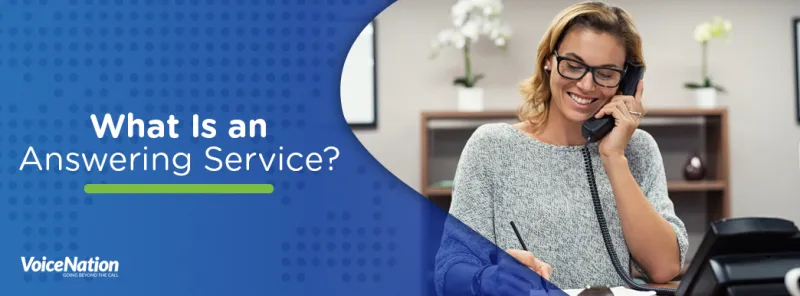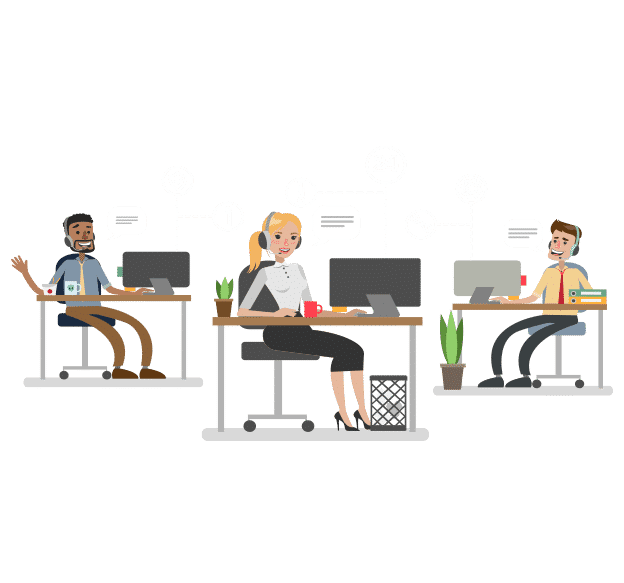All Categories
Featured
Table of Contents
- – What Is The Best Top Answering Service In Austr...
- – Which Is The Best What Is An Answering Service...
- – What Is The Best Automated Answering Services ...
- – What Is The Best Live Call Answering - Virtua...
- – Is It Worth Paying For A Guide To Using Autom...
- – What Is The Best What Is An Answering Servic...
What Is The Best Top Answering Service In Australia - 2023 Reviews
This device and its successors were developed by Sava Jacobson, an electrical engineer with a private consulting business. While early voice mail utilized magnetic tape technology, a lot of contemporary equipment uses strong state memory storage; some devices use a combination of both, with a solid-state circuit for the outbound message and a cassette for the incoming messages.
"toll saving" below) (call answering services). This works if the owner is evaluating calls and does not want to speak with all callers. In any case after going, the calling party must be notified about the call having been addressed (most of the times this begins the charging), either by some remark of the operator, or by some greeting message of the little, or addressed to non-human callers (e.
This holds particularly for the Little bits with digitally stored greeting messages or for earlier makers (before the rise of microcassettes) with an unique limitless loop tape, separate from a second cassette, dedicated to recording. There have actually been answer-only devices without any recording abilities, where the welcoming message needed to notify callers of a state of current unattainability, or e (local phone answering service).
Which Is The Best What Is An Answering Service? Company

about accessibility hours. In taping Little bits the greeting normally contains an invitation to leave a message "after the beep". A voice mail that utilizes a microcassette to tape messages On a dual-cassette answerphone, there is an outgoing cassette, which after the specified number of rings plays a pre-recorded message to the caller.

Single-cassette answering devices consist of the outgoing message at the beginning of the tape and inbound messages on the remaining area. They first play the announcement, then fast-forward to the next available area for recording, then tape the caller's message. If there are numerous previous messages, fast-forwarding through them can cause a considerable hold-up.
This beep is frequently described in the welcoming message, asking for that the caller leave a message "after the beep". Little bits with digital storage for the taped messages do not show this hold-up, of course. A little may use a push-button control center, whereby the answerphone owner can sound the house number and, by entering a code on the remote telephone's keypad, can listen to taped messages, or delete them, even when far from house.
What Is The Best Automated Answering Services - How Do They Work? Right Now

Therefore the machine increases the variety of rings after which it responds to the call (generally by 2, resulting in four rings), if no unread messages are presently kept, but responses after the set variety of rings (usually two) if there are unread messages. This allows the owner to discover whether there are messages waiting; if there are none, the owner can hang up the phone on the, e.
Some makers also allow themselves to be from another location triggered, if they have actually been turned off, by calling and letting the phone ring a specific a great deal of times (usually 10-15). Some provider abandon calls already after a smaller number of rings, making remote activation impossible. In the early days of Littles an unique transmitter for DTMF tones (dual-tone multi-frequency signalling) was regionally needed for push-button control, because the previously used pulse dialling is not apt to convey appropriate signalling along an active connection, and the dual-tone multi-frequency signalling was carried out step-by-step.
Any incoming call is not recognizable with respect to these homes in advance of going "off hook" by the terminal devices. So after going off hook the calls must be changed to suitable gadgets and just the voice-type is instantly accessible to a human, but possibly, nevertheless must be routed to a LITTLE BIT (e.
What Is The Best Live Call Answering - Virtual Reception And Why
What if I informed you that you do not need to really choose up your gadget when responding to a consumer call? Somebody else will. So practical, ideal? Addressing call doesn't need someone to be on the other end of the line. Effective automated phone systems can do the technique simply as effectively as a live agent and sometimes even better.
An automated answering service or interactive voice reaction system is a phone system that interacts with callers without a live person on the line - telephone answering service. When business utilize this innovation, consumers can get the answer to a concern about your service simply by utilizing interactions established on a pre-programmed call circulation.
Although live operators upgrade the client service experience, lots of calls do not need human interaction. An easy documented message or guidelines on how a client can retrieve a piece of information usually resolves a caller's instant need - telephone answering service. Automated answering services are an easy and reliable way to direct incoming calls to the right individual.
Is It Worth Paying For A Guide To Using Automated Answering Systems?
Notification that when you call a business, either for assistance or product questions, the first thing you will hear is a pre-recorded voice welcoming and a series of alternatives like press 1 for customer support, press 2 for questions, and so on. The pre-recorded choices branch out to other choices depending on the client's choice.
The phone tree system assists direct callers to the right individual or department utilizing the keypad on a smart phone. In some circumstances, callers can use their voices. It's worth noting that auto-attendant alternatives aren't limited to the ten numbers on a phone's keypad. When the caller has selected their first option, you can develop a multi-level auto-attendant that utilizes sub-menus to direct the caller to the ideal type of assistance.
The caller does not have to interact with an individual if the auto-attendant phone system can manage their concern. The automatic service can route callers to a staff member if they reach a "dead end" and require assistance from a live representative. It is expensive to work with an operator or executive assistant.
What Is The Best What Is An Answering Service And Why Use One?
Automated answering services, on the other hand, are significantly less costly and supply considerable cost savings at an average of $200-$420/month. Even if you do not have actually committed personnel to handle call routing and management, an automated answering service enhances performance by permitting your group to concentrate on their strengths so they can more efficiently invest their time on the phone.
A sales lead routed to customer care is a lost shot. If a client who has item questions reaches the incorrect department or receives incomplete responses from well-meaning staff members who are less trained to manage a specific kind of question, it can be a cause of aggravation and dissatisfaction. An automated answering system can lessen the variety of misrouted calls, thereby assisting your workers make much better use of their phone time while maximizing time in their calendar for other jobs.
With Automated Answering Systems, you can develop a customized experience for both your staff and your callers. Make a recording of your primary welcoming, and merely upgrade it routinely to show what is going on in your organization. You can develop as many departments or menu alternatives as you desire.
Table of Contents
- – What Is The Best Top Answering Service In Austr...
- – Which Is The Best What Is An Answering Service...
- – What Is The Best Automated Answering Services ...
- – What Is The Best Live Call Answering - Virtua...
- – Is It Worth Paying For A Guide To Using Autom...
- – What Is The Best What Is An Answering Servic...
Latest Posts
Live Phone Answering
Auto-attendant Answering Service Near Me
Answering Services For Small Businesses (Toowoomba 4350)
More
Latest Posts
Live Phone Answering
Auto-attendant Answering Service Near Me
Answering Services For Small Businesses (Toowoomba 4350)